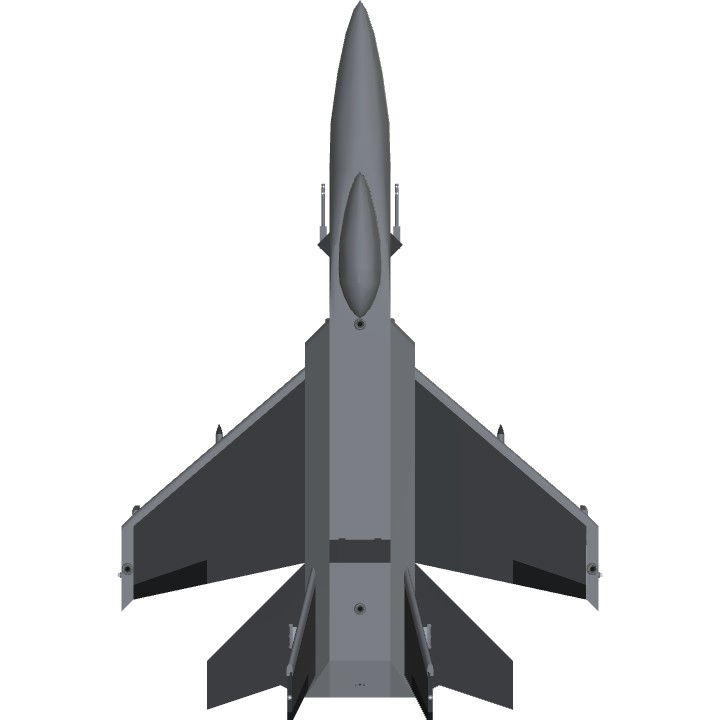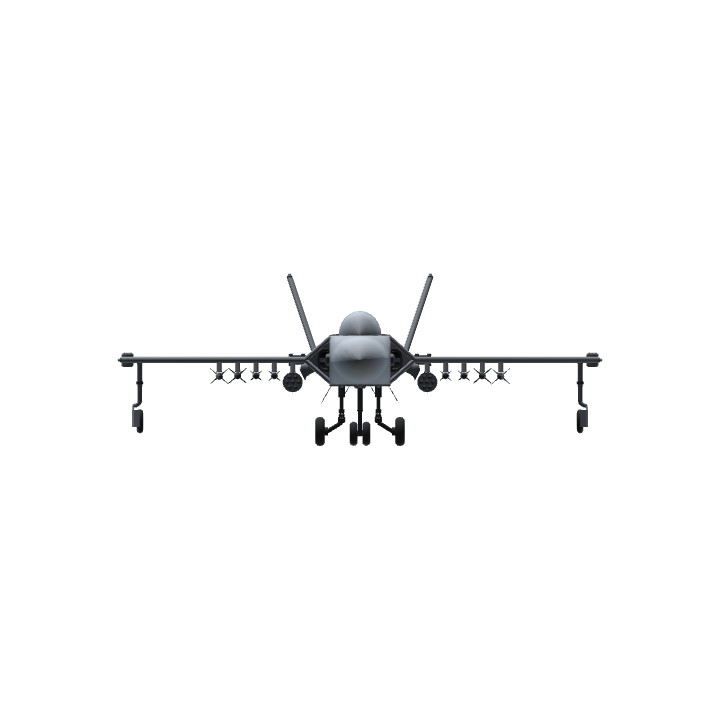UPDATE:
I changed the shape of the fuel scoops (air intakes) and wings to make the fighter look better. I also improved the look of the engine housing by using the new hollow fuselage block.
HISTORY:
The F-13 was the GEO version of the Xenan SF-2. The F-13 had the same armor, same armament, same engines, and the same avionics. It even had the same purpose as the SF-2. It was meant to serve as a training fighter for teaching new pilots the necessary skills of aerial combat. And because it was designed for training, the F-13 was purposely made slower and more sluggish than the other fighters in the GEO military. This made the pilots rely more on their skills than their hardware. The F-13's only difference from the SF-2 was its livery, which has been repainted in GEO grey and white.
ARMAMENT:
14x short ranged unguided air-to-ground rockets
4x medium ranged radar guided fire-and-forget air-to-ground inferno missiles
2x medium ranged radar guided air-to-air guardian missiles
2x long ranged radar guided fire-and-forget air-to-air interceptor missiles
Dual 50 cal. KVA-2 MKII machine guns
OPERATION INSTRUCTIONS AND ADVICE:
Action group 1 engages the main thrust engines.
Action group 2 engages the gyroscope.
Action group 3 engages the VTOL engine.
Action group 4 engages the VTOL RCNs.
Action group 5 illuminates the exterior lights.
Action group 6 jettisons all munitions.
Action group 7 deploys the arrest hook.
Action group 8 primes all munitions.
Do not pitch down too hard and too fast while launching any missiles or rockets, otherwise they might collide with the craft mid-flight and destroy it.
To use the VTOL, first engage action groups 2, 3, and 4. Next, throttle up until the craft starts levitating upward. Once a suitable altitude has been reached, rotate the VTOL nozzles backward (VTOL slider up) to push the craft forward. Then drop the throttle all the way down, deactivate action groups 2, 3, and 4, and activate action group 1. This step must be done relatively quick. While action group 1 is engaged, throttle back up again to start flying forward.
The RCNs (AG4) can be activated at any time, they can help maneuver the craft even when not in VTOL mode. This would be useful while flying in regions with low air density.
Specifications
General Characteristics
- Created On Windows
- Wingspan 32.4ft (9.9m)
- Length 48.3ft (14.7m)
- Height 11.5ft (3.5m)
- Empty Weight 10,715lbs (4,860kg)
- Loaded Weight 11,795lbs (5,350kg)
Performance
- Power/Weight Ratio 4
- Wing Loading 36.4lbs/ft2 (177.7kg/m2)
- Wing Area 324.2ft2 (30.1m2)
- Drag Points 6163
Parts
- Number of Parts 149
- Control Surfaces 4
- Performance Cost 869






